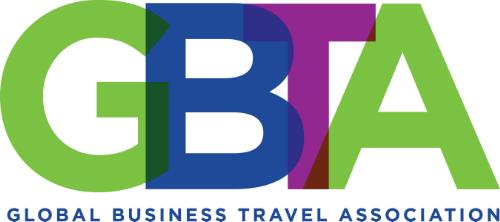As business travel resumes amid an ongoing pandemic, keeping connected with business travelers has taken on renewed urgency for companies and their travel managers. This is the topic tackled in a recent survey, “No Reservations: Travel Program Communications from the US Business Traveler’s Perspective,” conducted by the Global Business Travel Association (GBTA) and made possible by Dinova. The survey examines how travel programs communicate versus how US business travelers want them to communicate with them, in the COVID era and beyond.

“As we continue to move through the pandemic, communication and real-time information for business travelers has never been more important, even for the most experienced road warriors. Corporate travel managers are finding themselves taking on an even more vital role as messengers and managers of change when it comes to keeping their employee travelers informed and safe,” said GBTA CEO Suzanne Neufang.
 GBTA CEO Suzanne Neufang
GBTA CEO Suzanne Neufang
“Travel policies for enterprises have traditionally been pretty static. They are typically communicated during employee onboarding and maybe again in an annual reminder to employees. However, COVID has completely changed that cadence. Companies must now constantly adjust their travel policies based on COVID government policies, variants, vaccine rates, and regional differences to ensure that their employees are safe,” said Dinova CEO Alison Galik. “The research shows that companies may be doing a good job managing these policies, but there is a lot of room for improvement when it comes to making sure their employees understand the latest changes. We believe there is a big opportunity to address this by offering more information about local COVID requirements and through leveraging mobile channels.”
The current role of a travel manager continues across traditional areas like meal per diems and expense report deadlines for their business travelers, but now they are also more critically tasked with continuously communicating special safety updates and travel policy changes and processes because of the pandemic.
Here are survey highlights on what business travelers want now:
- Some business travelers need more info. Most business travelers already feel they have enough information about various COVID-related travel changes. However, a fairly significant minority need more information. If they were to take a work trip in the next six months. For example, 46 percent said they would need at least some additional information about country-specific entry/quarantine requirements.
- Supplier safety. An overwhelming majority of business travelers said it is “important” or “very important” to learn about the COVID-related safety measures of hotels (94 percent), airlines (93 percent), airports (92 percent), restaurants (86 percent), car rental companies (84 percent), and ride-share/taxi companies (82 percent). These can include cleaning and sanitation efforts, and mask and vaccine requirements for staff and customers.
In addition to COVID-related communication, the study also explored business traveler communication preferences in general. Despite the availability of new communication channels and platforms, business travelers still prefer tried and true communication channels.
- Email is still king. Business travelers overwhelmingly want their company to use email to share information about travel policies and travel-related resources. Four in five (81 percent) include email as one of the top five communication methods they want their company to use (out of 13 tested), which is by far higher than the share for any other method.
- Internal collaboration platforms gain traction, but lag behind the intranet: Companies widely use internal collaboration platforms—such as Slack and Microsoft Teams—to facilitate collaboration between colleagues. However, these are not widely used for travel program communication.
- Getting more mobile. Despite recent progress, travel programs largely do not use mobile-first communication methods. Or if they do use these methods, business travelers might be unaware. Only about one-third of business travelers (36 percent) say their company communicates about travel via text messaging and only about one-quarter (21 percent) say it communicates via push notifications through a mobile app.
- Send me a text. Business travelers prefer text messaging over push notifications. Half of business travelers (51 percent) include text messaging as one of the top five methods they want their company to use to communicate about travel. This compares to only 23 percent who include push notifications through a mobile app as one of the top methods.
- Bite-sized pieces. Most companies have a formal, written travel policy. But are they using other methods to deliver information in more bite-sized pieces? Only 12 percent of respondents say their company uses on-demand videos to communicate about travel and only 9 percent say infographics are used. And business travelers indicated they prefer on-demand videos over infographics. One-quarter (25 percent) include on-demand videos as one of the top five methods that they want their company to use to communicate about travel. This compares to only 8 percent who include infographics as one of their top five methods.
GBTA members can access the complete survey report and accompanying infographic here.
Visit gbta.org for more information.
[01.18.22]

